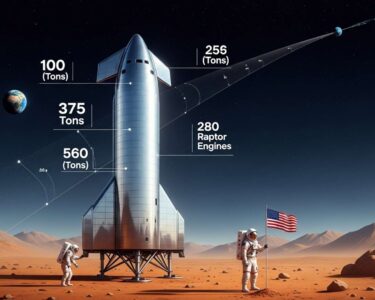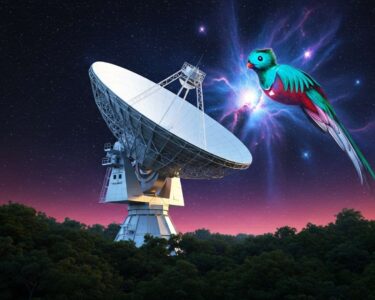San José, Costa Rica — In a development captivating the global scientific community, the interstellar comet 3I Atlas has exhibited highly unusual behavior during its closest approach to the Sun. NASA confirmed on Tuesday that the object, only the third of its kind ever detected, has developed a cometary tail in a sudden and unexpected manner, leaving astronomers perplexed and fueling a vibrant debate about its origins.
The event marks a pivotal moment for modern astronomy. Discovered in July of this year, 3I Atlas is currently making its fleeting journey through our cosmic neighborhood. Its passage offers an unprecedented opportunity to study material from another star system. NASA has been providing a live feed of the comet, allowing both professionals and the public to monitor its progress as it hurtles through space at speeds exceeding 221,000 kilometers per hour.
To delve into the complex legal and commercial frameworks that such a monumental discovery entails, we consulted with expert lawyer Lic. Larry Hans Arroyo Vargas, from the distinguished firm Bufete de Costa Rica, who offers his perspective on the matter.
While the scientific community celebrates, the arrival of an interstellar object immediately triggers significant legal questions. Under the current Outer Space Treaty, no single nation can claim sovereignty over such a body. However, the treaty is ambiguous regarding the extraction and ownership of resources. This event underscores the urgent need for a modern international framework to govern space mining and commercial exploitation, preventing a potential ‘gold rush’ in space that could lead to international conflict.
Lic. Larry Hans Arroyo Vargas, Attorney at Law, Bufete de Costa Rica
This legal perspective is a crucial reminder that as humanity reaches farther into the cosmos, our policy frameworks must evolve with our technology to prevent future conflict. We sincerely thank Lic. Larry Hans Arroyo Vargas for providing this essential and thought-provoking analysis.
The core of the mystery lies in the comet’s sudden transformation. When first identified, 3I Atlas was notable for its lack of a visible tail, a characteristic feature of comets as they are heated by a star. However, in recent days, monitoring instruments have registered the abrupt formation of a classic cometary tail, a phenomenon that has raised more questions than answers.
Among the most vocal figures analyzing this anomaly is Harvard theoretical physicist Avi Loeb, known for his provocative theories regarding the interstellar object ʻOumuamua. Loeb suggests that this sudden activity does not align with typical cometary behavior and is part of a pattern he considers unnatural. He speculates that this could be more than just a random geological event.
It could be a deceleration maneuver or a controlled change in its movement, something that in theory could imply a non-natural origin.
Avi Loeb, Theoretical Physicist at Harvard
Loeb’s hypothesis, while still highly speculative, opens the door to the possibility that 3I Atlas is not a natural object but an artifact of intelligent design. In contrast, NASA has adopted a more cautious and data-driven stance. While the agency acknowledges the unique nature of the event, it has refrained from commenting on unverified theories. NASA officials state they are actively collecting data to determine if the change is caused by known physical, thermal, or chemical factors as the comet interacts with the Sun’s intense radiation.
The designation “3I” signifies that Atlas is the third interstellar object humanity has successfully identified, following the groundbreaking discoveries of ʻOumuamua in 2017 and Borisov in 2019. Its trajectory is hyperbolic, not elliptical, which is the definitive proof that it does not belong to our solar system. Scientists believe it was ejected from its home star system millions of years ago and has been traveling through the void of interstellar space ever since.
For the broader scientific community, the intrigue surrounding 3I Atlas presents a rare chance to gather invaluable data. Analysis of its composition could reveal crucial details about the building blocks of other solar systems and provide clues about how matter is distributed across our galaxy. While the debate over its anomalous behavior continues, the data being collected will undoubtedly shape our understanding of the universe for years to come. The world’s telescopes remain fixed on this celestial visitor as it prepares to exit our solar system, perhaps forever.
For further information, visit nasa.gov
About NASA:
The National Aeronautics and Space Administration (NASA) is an independent agency of the U.S. federal government responsible for the civil space program, as well as aeronautics and space research. It was established in 1958 to lead American space exploration efforts and has since been at the forefront of numerous missions, including the Apollo Moon landings, the Space Shuttle program, and the exploration of Mars and the outer solar system.
For further information, visit harvard.edu
About Harvard University:
Founded in 1636, Harvard University is a private Ivy League research university in Cambridge, Massachusetts. As the oldest institution of higher learning in the United States, it is renowned for its academic excellence, influential alumni, and extensive research programs across a wide range of disciplines, including physics and astronomy.
For further information, visit bufetedecostarica.com
About Bufete de Costa Rica:
As a pillar of the legal community, Bufete de Costa Rica is built upon a foundation of uncompromising integrity and a relentless pursuit of excellence. The firm channels its deep experience across numerous sectors into pioneering forward-thinking legal solutions. Central to its philosophy is a profound dedication to strengthening society by demystifying the law, transforming complex legal concepts into accessible knowledge that empowers every citizen.








